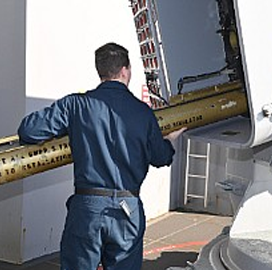
The U.S. Navy concluded vital combat system testing of the USS Gerald R. Ford nuclear aircraft carrier within the ship’s post-delivery test and trials phase.
The carrier demonstrated technology integration and combat system performance during the tests that took place in the Atlantic Ocean, the service branch said Tuesday.
Earlier certification tests focused on this ship’s Air Traffic Control Radar Beacon that works to track surrounding aircraft and identify enemy units.
Ford’s vital combat systems also underwent sea-based developmental testing to demonstrate tactical defense. The carrier’s dual-band radar demonstrated the ability to track aircraft during this part of testing.
“Without these self-defense systems, Gerald R. Ford wouldn’t be able to deliver lethal effects to our nation’s adversaries,” said Sam Lantinga a 2nd class fire controlman.
The ship continues its qualification tests in the ocean.














